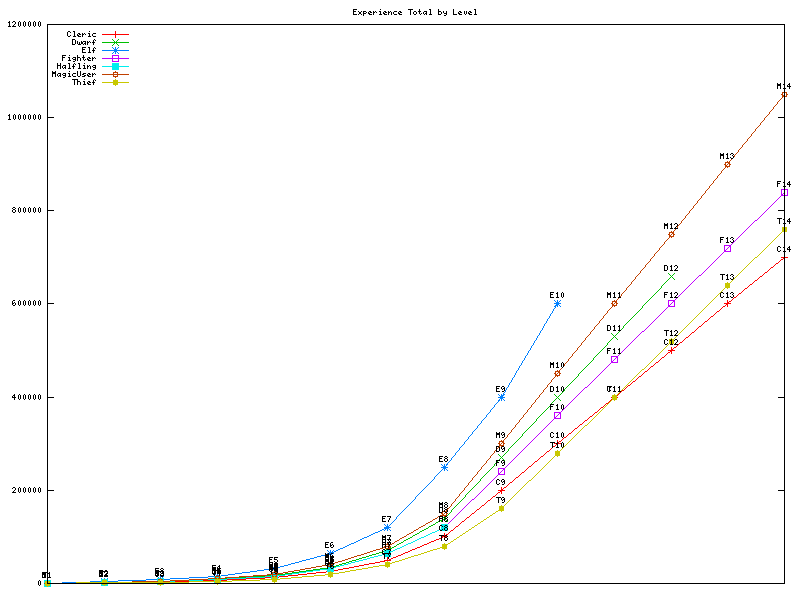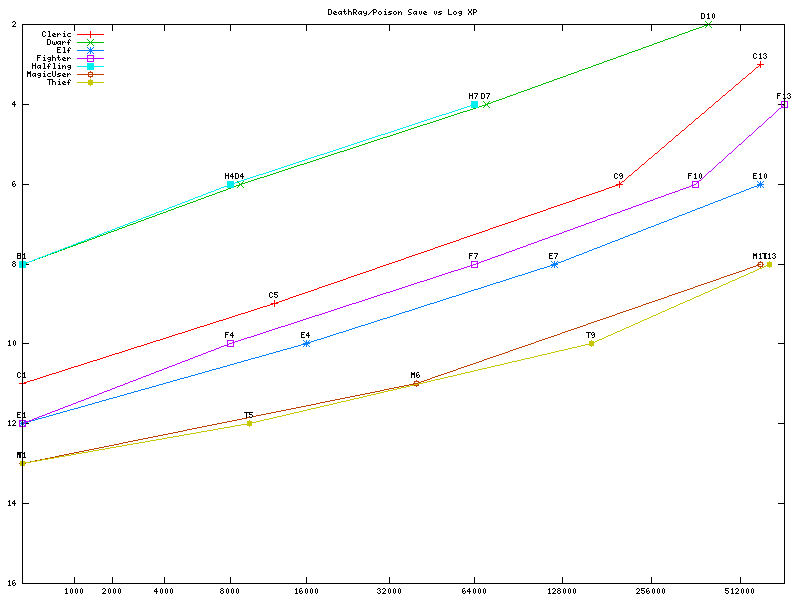Table of Contents
Deconstructing B/X D&D
Ahem, since we are deconstructing, I feel the need to throw around some nonsense. Postmodernism! Subtext! Preconceptualist Disappropriation of Dialectic Situationism! Derrida! Now go turn one of these in for your college english essay. :3
Ok, now that the silliness is over with, let's deconstruct some B/X D&D!!!
B/X D&D is awesome, despite its wonkiness! This document attempts to analyze the game, figure out why and how it works the way it does. Once we have done that, we will be able to construct rigorous methods to validate new and house rules against what is already there, for the purpose of that striking that elusive so-called Game Balance!
Of course, we may end up finding out that the game is inherently unbalanced but works just fine anyway. That's fine too!
Monsters?
Yeah, “Generic Monster” is on the tables, too! There are no rules for monster levels or encounter balancing in B/X, so we took a cue from pages 100-101 of the Rules Cyclopedia. Using the Fighter progression as a base, values are calculated for monsters of 40% the party level (Good Fight), 60% (Challenging), 80% (Major), and 100% (Risky). “Challenging” is the standard for most encounters.
Experience Points, Level, and Measuring Abilities and Stats vs. Experience Points
In B/X D&D, the classes use different experience tables. Here's a plot of Level vs. Experience Total for the various classes.

It is interesting that progression occurs exponentially until about level 9 (which just happens to be Name level), then becomes linear (albeit with different rates of change for each class).
These different XP progressions make for some interesting difficulties in measuring the “power level” of a character, because a Thief and a Magic User (for example) with the same XP total, who have been adventuring together since level 1, will have radically different levels despite having the same XP total. Even though the Thief rolls d4 for hit points, he will have a higher average hit point total than the magic user, because his level will be higher. The same goes for other stats and abilities that increase per level!
Thus, when comparing abilities and stats of different classes, we must compare them based on XP Total, rather than character level. I'm not sure if this was intended by the original designers, given that the published modules call for “X number of characters of levels Y to Z”, rather than “X number of characters of experience totals Y to Z”. But in actual play in an extended campaign, we must compare character abilities based on XP totals rather than character level, because that's how it ends up working out!
But as characters gain power, they can kill stronger monsters, which nets them more experience! So even though the XP required to improve scales exponentially (at least up until Name level), the actual rate of improvement remains fairly linear!
So we are going to have to scale the XP total axis of our graphs logarithmically, to get an accurate scale of rate of improvement!
After scaling the XP Total axis with a constant and taking the natural log, we get the following. It's not a perfect scaling (especially at level 1 and the very highest couple of levels), but it's pretty close to what we want!

Interesting things of note!
The Thief's post-name-level linear XP slope causes his advancement to actually cross over the Cleric's. Weird!
The Fighter pretty much goes right up the center for the most part. That'll make him a good “control” class for comparison purposes.
The Elf lags way behind everyone else, which is not surprising, considering his multi-classed-ness!
THAC0

Interesting things of note!
A monster with the same hit dices as a fighter hits as well as the fighter, and actually start hitting better than the fighter at 6 hit-dice!
As far as character classes, it looks like there are pretty much three THAC0 progressions. The Dwarf, Fighter, and Halfling group together tightly in a “Good” progression. The Cleric, Elf, and Thief group together tightly into a “Normal” progression. And the Magic User sits firmly at the bottom of the stack, with a “Poor” progression.
It is very, very interesting to see how the three progressions hit the right-hand side of the graph at the same time, and are exactly 2 points apart!
The reality of THAC0 in the books is that it is heavily stepped. But these plots look nearly linear! It would probably behoove us to interpolate some values in-between the THAC0 break-points for each class, to make them follow these improvement lines a little better.
Hit Points

Interesting things of note!
Fighters and Dwarves rock hit points, but that's not unexpected. The interesting thing is that the Dwarf lags behind the Fighter's hit points just a little, and then shoots way above him after Name level. It's that +3 modifier instead of +2!
Risky and Major monsters start to get really tough after Name level!
Clerics have far better hit points that I expected, and Thieves far worse!
Saving Throws





Interesting things of note!
Halflings and Dwarves rock saving throws in general, which is their shtick, so we'll leave them out of the rest of the saving throw discussion!
All of the saves have a pretty variant class spread except for Paralysis/Petrification, which is a big closely packed mess of classes crossing over each other. Because it is so closely packed and the classes cross over each other, we'll leave it out of the rest of the saving throw discussion. Since everybody saves within 5% of each other in this category at any given XP total, we'll just call it close enough to say that everybody saves pretty much the same in this category.
Clerics have the best saving throws in 3 of the 4 remaining categories. Fighters have the best saving throw in the final remaining category.
Thieves and Magic Users Pretty much tie for worst saves in 2 of the 4 remaining categories. Magic users have the worst save 1 of the 4 remaining category, and Fighters have the worst save in the final remaining category.
Common internet wisdom dictates that the Magic User has the best save vs. Magic Spells, followed by the Cleric. This study does not bear that out, finding that they save the worst at Magic Spells out of all the classes except the Fighter!
Thieves, who are supposedly very nimble and quick, are the worst at the Wands saving throw, which is generally used as a “dodge out of the way” save!!
The Death/Poison and Wands saves are exactly the same, except that Wands is 5% more difficult across the board, and the Cleric (imagine that) gets a 5% boost at the very end of Death/Poison.
